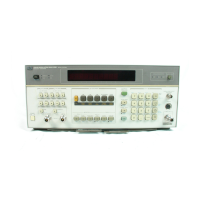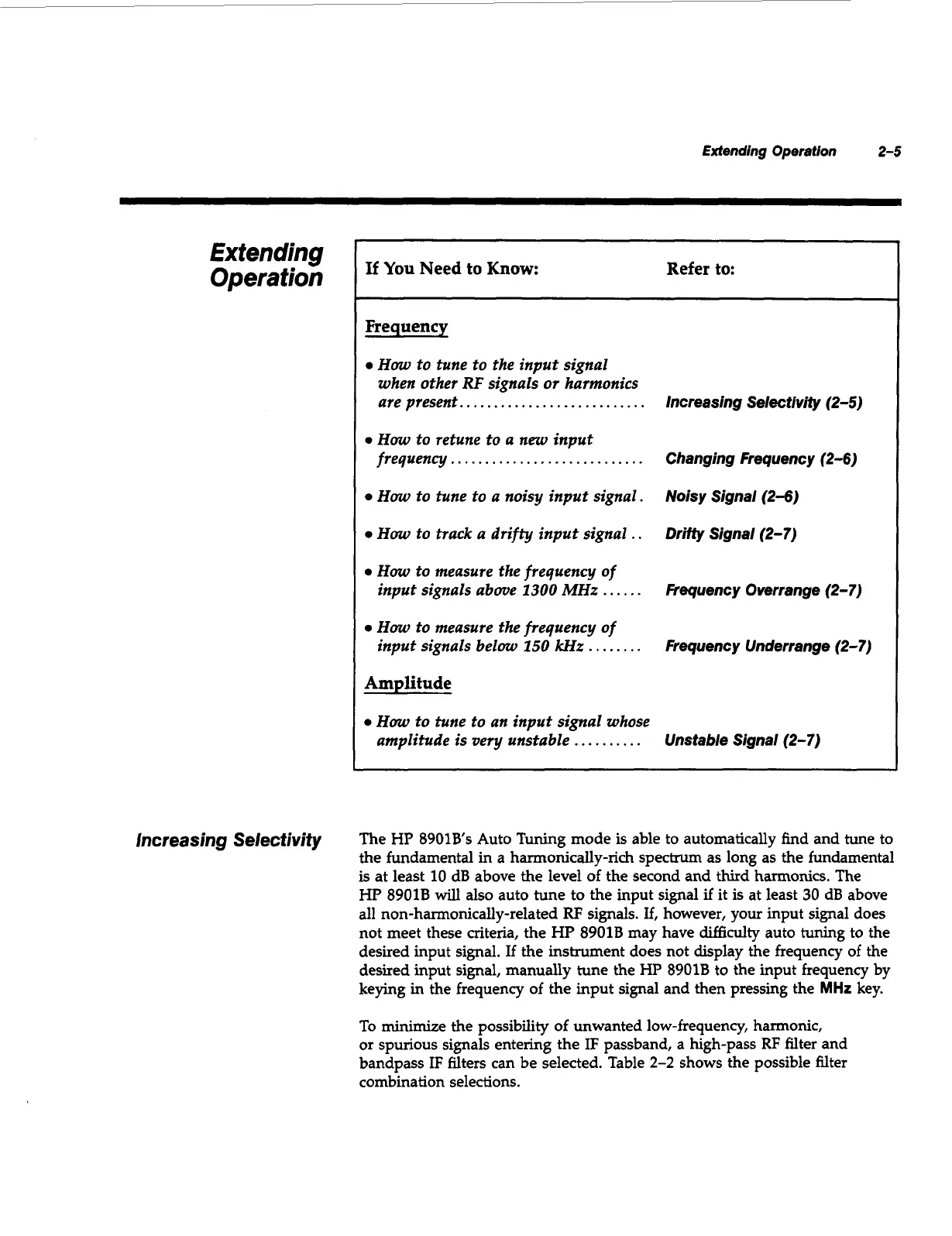Extending Operation
2-5
Extending
Operation
If
You
Need
to
Know:
Refer
to:
Frequency
How
to tune to the input signal
when other
RF
signals
or
harmonics
are present..
.........................
0
How
to retune to a
new
input
frequency
............................
How
to tune to a noisy input signal.
How
to track a
drifty
input signal
.
.
How
to measure the frequency of
input signals above
1300
MHz
......
How
to measure the frequency of
input signals below
150
kHz
......
Amplitude
How
to tune to an input signal whose
amplitude is very unstable..
........
Increasing Selectivity
(2-5)
Changing Frequency
(2-6)
Noisy Signal
(2-6)
Driffy
Signal
(2-7)
Frequency Overrange
(2-7)
Frequency Underrange
(2-7)
Unstable Signal
(2-7)
Increasing Selectivity
The HP
8901Bs
Auto Tuning mode is able to automatically find and tune to
the fundamental in a harmonically-rich spectrum as long as the fundamental
is at least
10
dB
above the level of the second and third harmonics. The
HP 8901B will also auto tune to the input signal
if
it is at least
30
dB above
all
non-harmonically-related
RF
signals.
If,
however, your input signal does
not meet these criteria, the HP 8901B may have
difi5culty
auto tuning to the
desired input signal.
If
the instrument does not display the frequency of the
desired input signal, manually tune the HP 8901B to the input frequency by
keying in the frequency of
the
input signal and then pressing the
MHz
key.
To minimize the possibility of unwanted low-frequency, harmonic,
or spurious signals entering the
IF
passband, a high-pass
RF
filter and
bandpass
IF
filters can be selected. Table
2-2
shows the possible filter
combination selections.

